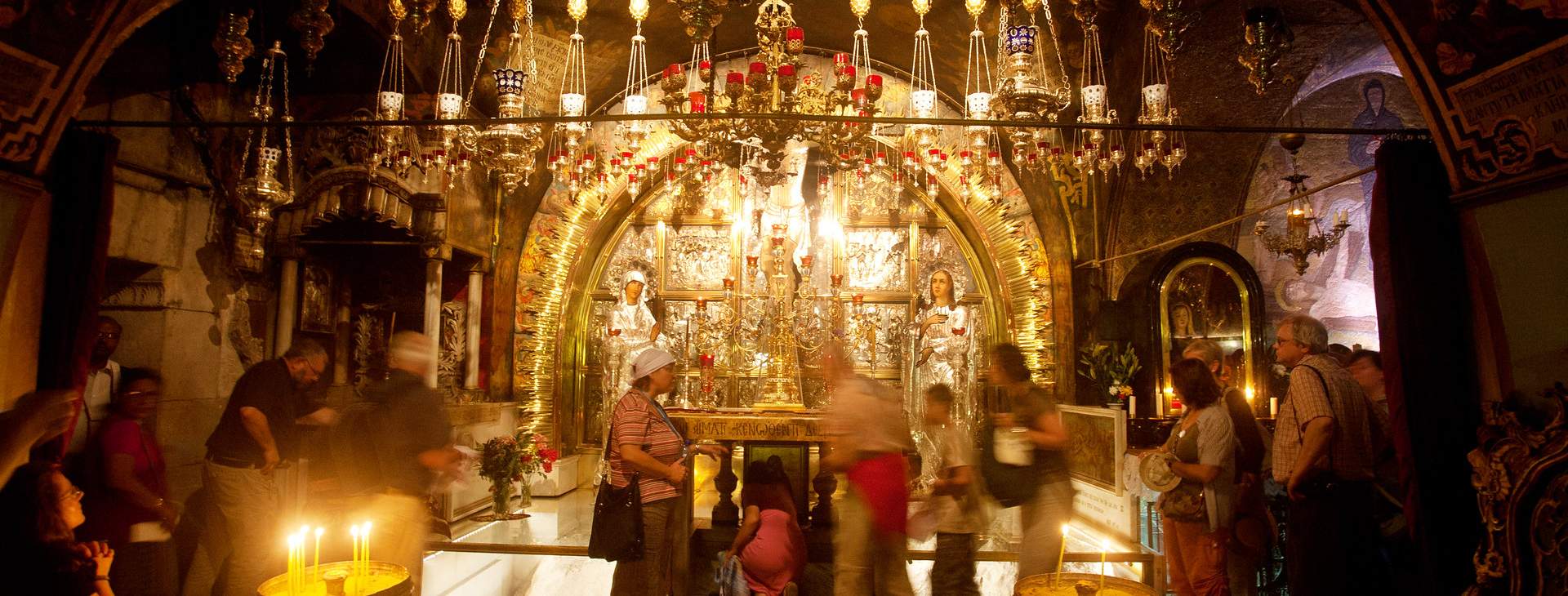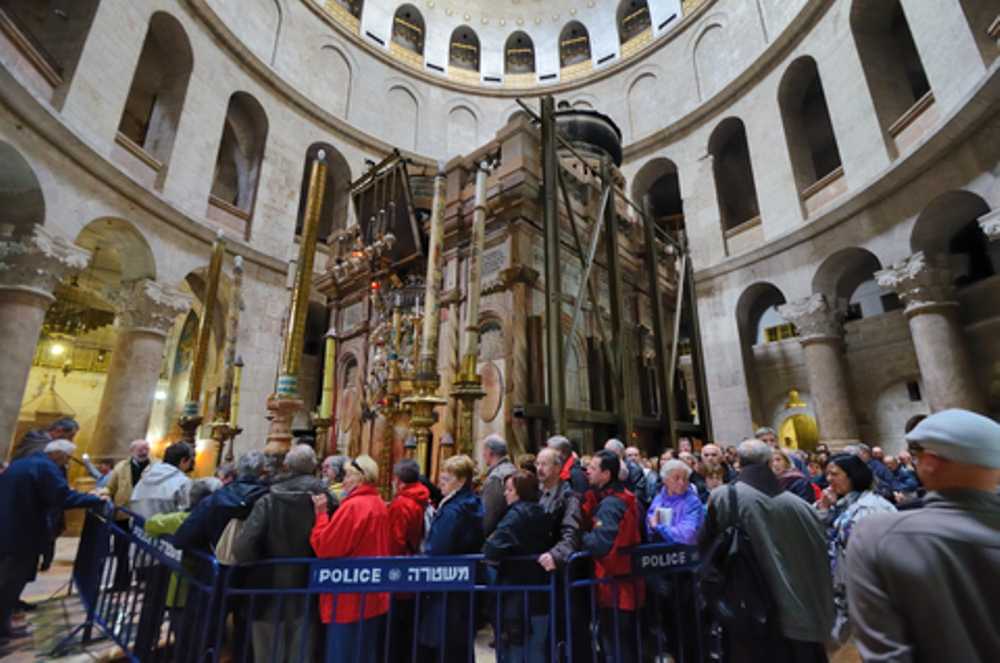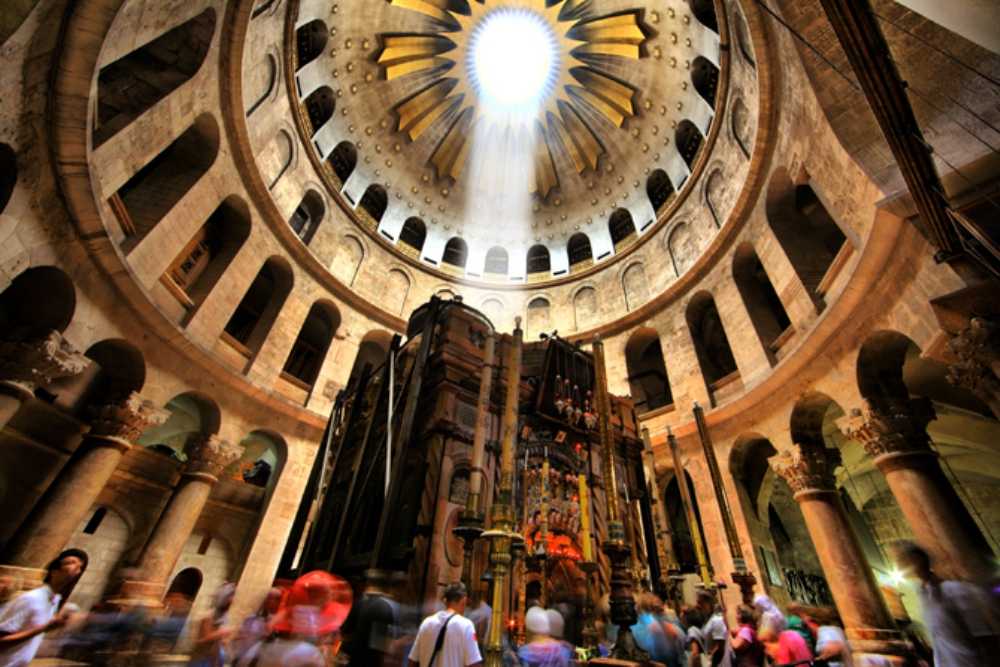This is the place of Jesus' crucifixion, burial, and resurrection. Visiting it is the trip's highlight for many tourists visiting the Land of Israel and Jerusalem.
The last stop on Jesus' journey in one of the most magnificent churches in the old city
The last stations on the path of Christ's suffering are within the church - from the ninth station to the fourteenth station. The church is located in the Christian quarter of the Old City of Jerusalem, at the end of the "Via Dolorosa" ("Path of Agony"). You can find a site between the church walls identified as the Golgotha Hill, mentioned in the New Testament.
The church’s entrance courtyard mostly belongs to the three major factions that own it: the Latins, the Armenians, and the Greeks. In it, liturgical activity takes place, mainly during Easter. For example, on Holy Thursday, the washing of the feet by the Orthodox Patriarch takes place in the courtyard in memory of the washing of the disciples' feet by Jesus during the Last Supper. The visit to the Church of the Holy Sepulcher is the trip's highlight for many tourists visiting Israel and Jerusalem.
About the history of the Church of the Holy Sepulchre
The front of the church was designed during the Crusader period. In the past, transoms were decorated with cruciform reliefs above the entrance arches. These are now in the Rockefeller Museum. The bell tower on the left was also built during the Crusader period.
The church was built in the fourth century by Emperor Constantine, who accepted Christianity and made it the religion of the Roman Empire. The emperor's mother, St. Helena, walked around the Holy Land and identified the sites where the events mentioned in the New Testament occurred. Helena identified this place as the place of 'Golgotha' where Jesus was crucified, and next to it the tomb of Joseph the Mount of Olives, who made it possible for Jesus to be buried after he was removed from the cross.
In the 13th century, Muslim families received the responsibility for opening the church and the keys to the church. They are still responsible for the keys to the church, for opening it at dawn and locking it at sunset.
In the 19th century, a status quo agreement was established between the different factions, defining the rights of prayer and the authority of the various factions in the church.
Over the years, many changes were made to the church, which received its current form during the Crusader period. When it was built in the Byzantine period, it was larger and was called the 'Church of the Resurrection', to emphasize precisely the resurrection of Jesus.














